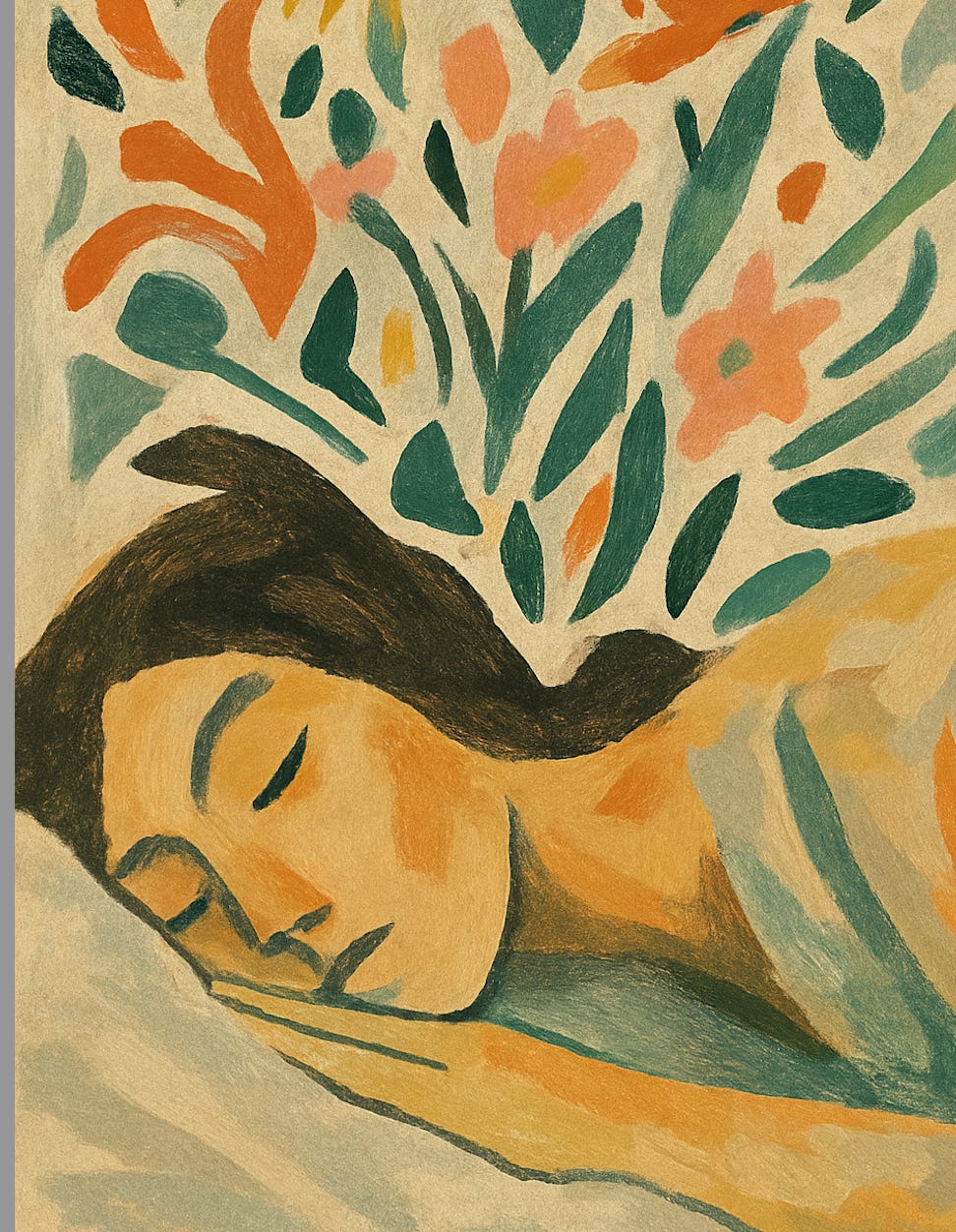Sometimes I start a Substack in my sleep, or rather, in the first few moments of consciousness. In that threshold between sleeping and waking, the curatorial thinking of writing already seems to be underway. This period of unconscious incubation appears to start to merge with other raw, unrefined thoughts, conversations, ideas I’ve had or absorbed from elsewhere. If I’m lucky, an idea will arrive fully formed. 1
Don’t get me wrong, words are still weight up, worried over, meditated upon, but the way they arrive? I’m not crediting the myth of the muse.
The phenomenon is referred to as hypnopompic cognition or hypnopompic state.2 It’s a transitional period of consciousness between sleep and wakefulness, where the brain exists (sometimes lingering awhile) in this unique neurological state: creative, intuitive, and unconstrained by the usual logic or critical filters. The hypnopompic state is a receptive state, retracing of echoes and glitches, the working of a processor that continues to hum when we sleep. I far prefer the hypnopompic to the hypnagogia (falling asleep) and the daydreaming; both those states seem less creatively fruitful for me.3
Processing a problem unconsciously, during rest or sleep brings sudden clarity because the brain has been working through a problem in the background, like processing / recursive searches in tech, the defragmenting of a hard drive, a system cleanup that involves reorganising or optimising data. It’s a type of indexing of our entire archive of lived experience, emotions, images, searching for a memory or metaphor that fits or consolidates the problem / project / writing at hand. Apparently, our brains loop through permutations until a match surfaces.
It’s an especially fertile state for creative thinking where the boundaries between consciousness and subconsciousness are thin, allowing connections and threads of logic, to emerge. In the hypnopompic state, your conscious mind may receive messages or capture remnants from your dreaming mind, insights and fragments of knowledge that have long been buried.
It reminds me of the traditional lore of All Hallows, a time when the veil between the living and the dead is supposed to thin, when it is possible to receive messages from the spirit world.
I’ve long been intrigued by the writing that happens when you are not actually in the act of writing, gestational forms of writing that include not actually writing (see Substack which mentions Not Writing by Anne Boyer). The moment a memory emerges from the crevices, past the everyday arbitrary thoughts to join conscious thinking. The fact this happens organically in this sleep-waking state, but is implicitly forensic: an internal excavation / archaeological dig of the mind’s archives? That a thought can surface from the sediment of sleep, unbidden, yet precise? That’s alchemical.
Writing, then, perhaps not always an act of composition, but a type of haunting, a remembering of something we never knew we knew.4
I would love to hear if anyone else experiences this? It’s only been happening to me in the last few months. I think.
First coined by spiritualist‐psychical researcher Frederic Myers in 1904.
Then there’s Pilates class, and the meditative calm accompanying that structured breath-work, that makes space for thought to line up, letting my mind quietly reorganise, remember appointments and messages I need to return.
COMPLETELY unrelated, I couldn’t work out where to put the italics in we never knew we knew. I spent a fair amount of time looking at this phrase as a dismount. Too much time, arguably, trying to decide whether I liked its repetition, semantic, phonic, and poetic play: the forced nasals of n; the inaudible (silent k) in the consonant digraph of kn; the voiced (vibrates in the voice box), labiovelar (involving the lips and velum), approximant (lips don’t touch) of w; and the gliding onset of we leaning into the ews in knew.





